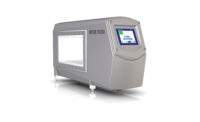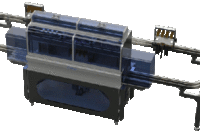A Technology Column That's not Really About Technology
“Dairy technology” may sound oxymoronic, given the most common connotations of technology. After all, we are an industry that has to strategize about feeding animals and what to do with their byproducts.
“Dairy technology” may sound oxymoronic, given the most common connotations of technology. After all, we are an industry that has to strategize about feeding animals and what to do with their byproducts. It doesn’t feel exciting enough to delve into technology. Undeniably, technology (in its non-electrical, broader sense) has made our industry more efficient, but that technology has been heavily at the farm level, focusing on reducing production costs rather than at the marketing level focusing on growing sales. But I think that’s going to change. I think it has to change.
Oberweis Dairy is a small company in Illinois, and our sales are primarily direct-to-consumer. Therefore, keeping up with marketing technology is very important, but it has been challenging and undoubtedly expensive. Believing that successful marketing to consumers today requires new methods, we’ve invested in new technology that appears to be paying dividends. Here are several examples:
Microsegmentation. We are fortunate to have direct-to-consumer sales giving us the ability to study buying habits of individual customers over time and break them down into tiny segments (even as small as one). Think of having SymphonyIRI data on a person-by-person level (rather than only store level). We’ve implemented sophisticated analytics software called SAS and have found great wisdom available from careful data analysis. We’re a small company and can do this; I know larger companies have many more people to mine and analyze their data. I believe companies unable to microsegment their customers will be at a competitive disadvantage over the next decade.
Apps. The cost of software development is dropping, which is making automation of many administrative tasks within reach and allowing for exciting new capabilities that could not have existed years ago. For example, we’ve launched D2D-Pro, a new app built specifically for the iPad platform to manage a door-to-door sales team (who sell our home delivery service).
We get great data with sales call dispositions, history by address and real-time, rep-level, sales-funnel statistics. Our reps are given access to their own customers’ contact information and the ability to create a new customer account on the spot, wirelessly. Because they have entered address-specific dispositions, we give them credit for a new customer who starts our service within 10 days of the rep calling on their house.
We believe this is pioneering technology in door-to-door sales management for the home delivery dairy industry. We anticipate licensing the software to companies with door-to-door sales teams.
For us, the next step is a consumer-based app to allow our customers to modify their orders and update their Oberweis accounts.
Social media. No matter how much I want to avoid the hype, it’s undeniable that so-called “social media” is becoming an important way to market brands. We’ve used Facebook as an express connection to our most vocal advocates. Measuring return on investment is incredibly challenging, but measuring ROI on many marketing initiatives is challenging. Simply having a channel of communication to our best customers is intuitively worthwhile.
Better delivery. Although not electrical, our delivery methods certainly involve new technology as well. We’ve designed a method to safely deliver ice cream in the summer heat (safe for people and the product) in addition to a new porch box designed with know-how from 2011 rather than 1911. We’ve applied for patents on both, but we want to spread these innovations throughout the industry.
These are just a few examples of the investments we’re making. Within the dairy industry, we are very small. However, within the home delivery industry, we’re relatively sophisticated. We believe that many of the systems and infrastructure we’re building today will enable us to more effectively serve our customers and leverage our systems by licensing technology to other companies.
The technologies I’ve discussed above are just examples of steps we’re taking to modernize. Dairy companies everywhere should develop custom apps or complex microsegmentation strategies. As an industry, we have to understand that we’re not in 1950 anymore, and we have to adjust for the world we live in today. We’re competing in a global economy. Right now, demand for milk outside the United States is pushing raw milk prices drastically higher. Yes, “global economy” also has become a buzzword, but that has happened for a reason. We truly are operating in a world where increased demand from developing economies impacts us.
My ultimate thesis is this: as an industry, we have to come into the 21st century. If we don’t, we’ll be left behind and outpaced by other countries.
Joe Oberweis is president and CEO of Oberweis Dairy, North Aurora, Ill.
Dairy Foods seeks essays from dairy processors. Contact carperj@dairyfoods.com.
“Dairy technology” may sound oxymoronic, given the most common connotations of technology. After all, we are an industry that has to strategize about feeding animals and what to do with their byproducts. It doesn’t feel exciting enough to delve into technology. Undeniably, technology (in its non-electrical, broader sense) has made our industry more efficient, but that technology has been heavily at the farm level, focusing on reducing production costs rather than at the marketing level focusing on growing sales. But I think that’s going to change. I think it has to change.
Oberweis Dairy is a small company in Illinois, and our sales are primarily direct-to-consumer. Therefore, keeping up with marketing technology is very important, but it has been challenging and undoubtedly expensive. Believing that successful marketing to consumers today requires new methods, we’ve invested in new technology that appears to be paying dividends. Here are several examples:
Microsegmentation. We are fortunate to have direct-to-consumer sales giving us the ability to study buying habits of individual customers over time and break them down into tiny segments (even as small as one). Think of having SymphonyIRI data on a person-by-person level (rather than only store level). We’ve implemented sophisticated analytics software called SAS and have found great wisdom available from careful data analysis. We’re a small company and can do this; I know larger companies have many more people to mine and analyze their data. I believe companies unable to microsegment their customers will be at a competitive disadvantage over the next decade.
Apps. The cost of software development is dropping, which is making automation of many administrative tasks within reach and allowing for exciting new capabilities that could not have existed years ago. For example, we’ve launched D2D-Pro, a new app built specifically for the iPad platform to manage a door-to-door sales team (who sell our home delivery service).
We get great data with sales call dispositions, history by address and real-time, rep-level, sales-funnel statistics. Our reps are given access to their own customers’ contact information and the ability to create a new customer account on the spot, wirelessly. Because they have entered address-specific dispositions, we give them credit for a new customer who starts our service within 10 days of the rep calling on their house.
We believe this is pioneering technology in door-to-door sales management for the home delivery dairy industry. We anticipate licensing the software to companies with door-to-door sales teams.
For us, the next step is a consumer-based app to allow our customers to modify their orders and update their Oberweis accounts.
Social media. No matter how much I want to avoid the hype, it’s undeniable that so-called “social media” is becoming an important way to market brands. We’ve used Facebook as an express connection to our most vocal advocates. Measuring return on investment is incredibly challenging, but measuring ROI on many marketing initiatives is challenging. Simply having a channel of communication to our best customers is intuitively worthwhile.
Better delivery. Although not electrical, our delivery methods certainly involve new technology as well. We’ve designed a method to safely deliver ice cream in the summer heat (safe for people and the product) in addition to a new porch box designed with know-how from 2011 rather than 1911. We’ve applied for patents on both, but we want to spread these innovations throughout the industry.
These are just a few examples of the investments we’re making. Within the dairy industry, we are very small. However, within the home delivery industry, we’re relatively sophisticated. We believe that many of the systems and infrastructure we’re building today will enable us to more effectively serve our customers and leverage our systems by licensing technology to other companies.
The technologies I’ve discussed above are just examples of steps we’re taking to modernize. Dairy companies everywhere should develop custom apps or complex microsegmentation strategies. As an industry, we have to understand that we’re not in 1950 anymore, and we have to adjust for the world we live in today. We’re competing in a global economy. Right now, demand for milk outside the United States is pushing raw milk prices drastically higher. Yes, “global economy” also has become a buzzword, but that has happened for a reason. We truly are operating in a world where increased demand from developing economies impacts us.
My ultimate thesis is this: as an industry, we have to come into the 21st century. If we don’t, we’ll be left behind and outpaced by other countries.
Joe Oberweis is president and CEO of Oberweis Dairy, North Aurora, Ill.
Dairy Foods seeks essays from dairy processors. Contact carperj@dairyfoods.com.
Looking for a reprint of this article?
From high-res PDFs to custom plaques, order your copy today!







